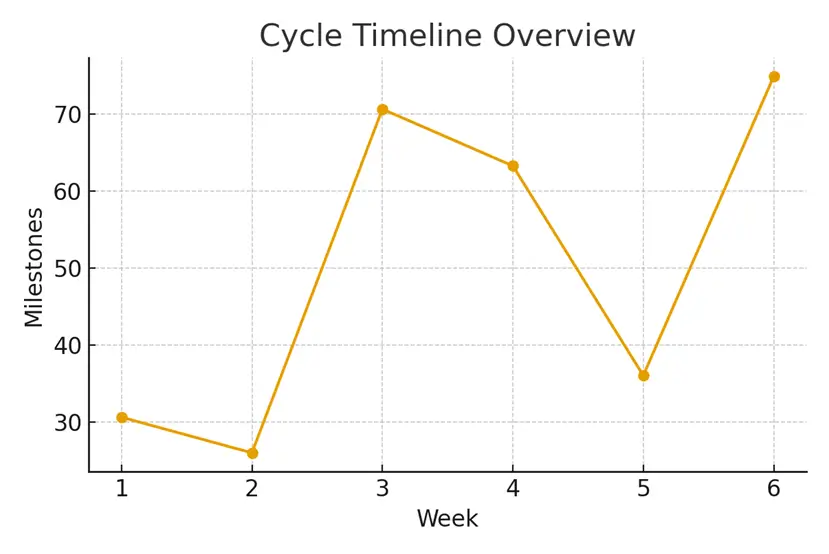
When you begin IVF, one of the most important decisions is choosing between fresh and frozen embryo transfer (FET). This guide explains how each approach works, who benefits most, and what factors—biological, emotional, and logistical—can influence outcomes. You’ll learn when to pause or proceed, how timing impacts success rates, and how to keep your care simple, transparent, and humane.
Definitions and Where This Fits in the IVF Journey
- Fresh Embryo Transfer (ET): The embryo is transferred into the uterus within 3–5 days after egg retrieval in the same cycle.
- Frozen Embryo Transfer (FET): The embryo is frozen and stored after fertilization, then thawed and transferred in a later cycle once the body is hormonally ready.
- Where It Fits: Both options occur after fertilization and embryo grading, forming a key checkpoint in the IVF process.
Eligibility Signals — When to Escalate or Pause
Fresh Transfer May Fit If:
- Hormone levels (especially estrogen and progesterone) are stable.
- The uterine lining is receptive and ready for implantation.
- No signs of ovarian hyperstimulation syndrome (OHSS).
Frozen Transfer May Fit If:
- The body needs recovery after stimulation.
- You’re doing PGT-A (genetic testing).
- There are scheduling, travel, or health timing constraints.
Pause If:
- The uterine lining is too thin, hormone levels are unstable, or recovery is incomplete after egg retrieval.
Step-by-Step with Timing Checkpoints
Fresh Transfer:
- Ovarian stimulation and egg retrieval.
- Fertilization and embryo culture (Day 3–5).
- Embryo selection and transfer in the same cycle.
- Pregnancy test after 10–12 days.
Frozen Transfer:
- Ovarian stimulation and egg retrieval.
- Embryo cryopreservation (freezing).
- Endometrial preparation in a future cycle.
- Thaw and transfer at optimal timing.
- Pregnancy test after 10–12 days.
Pros, Cons, and Practical Costs
| Factor | Fresh Transfer | Frozen Transfer |
| Pros | Faster timeline, emotional momentum | Better uterine environment, lower OHSS risk |
| Cons | Higher hormone stress, possible implantation mismatch | Added freezing/thawing cost, delayed pregnancy |
| Average Cost (USD) | $12,000–$15,000 per IVF cycle | Cryopreservation: $800–$1,200
Storage: $300–$600/year Thaw & Transfer: $2,000–$3,000 |
| Success Rates | Slightly lower for some groups | Often higher, especially after PGT or in younger patients |
| Best For | Younger patients, stable cycles | Genetic testing, high responders, and schedule flexibility |
Outcome Drivers — What You Control vs. Monitor
You Control:
- Nutrition and lifestyle (BMI, alcohol, sleep).
- Timing decisions with your clinic.
- Emotional pacing between cycles.
You Monitor:
- Embryo quality (via grading or PGT-A).
- Uterine lining response.
- Hormonal readiness and stress recovery.
Questions to Ask Your Clinic
- How do your success rates differ between fresh and frozen transfers?
- What’s the recommended recovery window between retrieval and transfer?
- Will PGT-A testing delay my timeline?
- Are there storage or medication costs I should anticipate?
- How do you prevent cycle cancellations or OHSS?
Expert Quote
“Protect timing and keep plans simple—quality improves when noise goes down.”
— Clinical Team, Surrogacy4all
Patient Case Study
A couple in their mid-30s struggled with uncertain timing after retrieval. With clear planning and frozen transfer scheduling, their stress levels dropped and coordination improved. A healthy pregnancy after their first FET cycle, with predictable costs and no hormonal overload.
Testimonials
- “The steps finally made sense.” — A. & J., Manhattan
- “Costs were clear; no surprise bills.” — L., Hoboken
- “Nurses replied fast with practical coaching.” — K. & V., Queens
Frequently Asked Questions (FAQs)
Q: Is this medical advice?
Ans : No—this information helps you prepare for discussions with your fertility team.
Q: How many cycles should I plan?
Ans : Think in ranges—cumulative success matters more than single-cycle outcomes.
Q: What drives cost most?
Ans : Medications, genetic testing, anesthesia, and the total number of cycles.
Additional Insights
- Single-Embryo Transfer Policy: May reduce euploidy yield but supports safer outcomes—use evidence-based selection.
- Ovarian Stimulation & Synchronization: Aligns uterine readiness, minimizing delays.
- Male Factor Optimization: Early evaluation shortens the time to pregnancy.
- Clinic Calendar Alignment: Boosts predictability across cycles.
- International Travel Logistics: Can be simplified by freezing and scheduling transfers abroad.
- Escrow & Financial Safeguards: Support clarity and confidence in long-term planning.
Conclusion
Choosing between fresh and frozen embryo transfer is a personal and medical decision that depends on your health, timing and fertility goals. Fresh transfers may offer faster results, while frozen transfers often provide a more controlled environment with higher success rates in specific cases. The key is not just picking one method—but aligning it with your body’s readiness, emotional bandwidth, and clinic’s strategy.
Work closely with your fertility team to understand the timing, costs, and expected outcomes. When handled with clear communication and realistic planning, both options can lead to the same goal—a healthy pregnancy and peace of mind throughout your IVF journey.
Schedule a free 15-minute nurse consultation by calling (212) 661-7673. You can upload your lab results for a professional second opinion and receive a clear, transparent cost breakdown tailored to your individual case.

Dr. Kulsoom Baloch
Dr. Kulsoom Baloch is a dedicated donor coordinator at Egg Donors, leveraging her extensive background in medicine and public health. She holds an MBBS from Ziauddin University, Pakistan, and an MPH from Hofstra University, New York. With three years of clinical experience at prominent hospitals in Karachi, Pakistan, Dr. Baloch has honed her skills in patient care and medical research.




